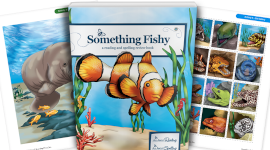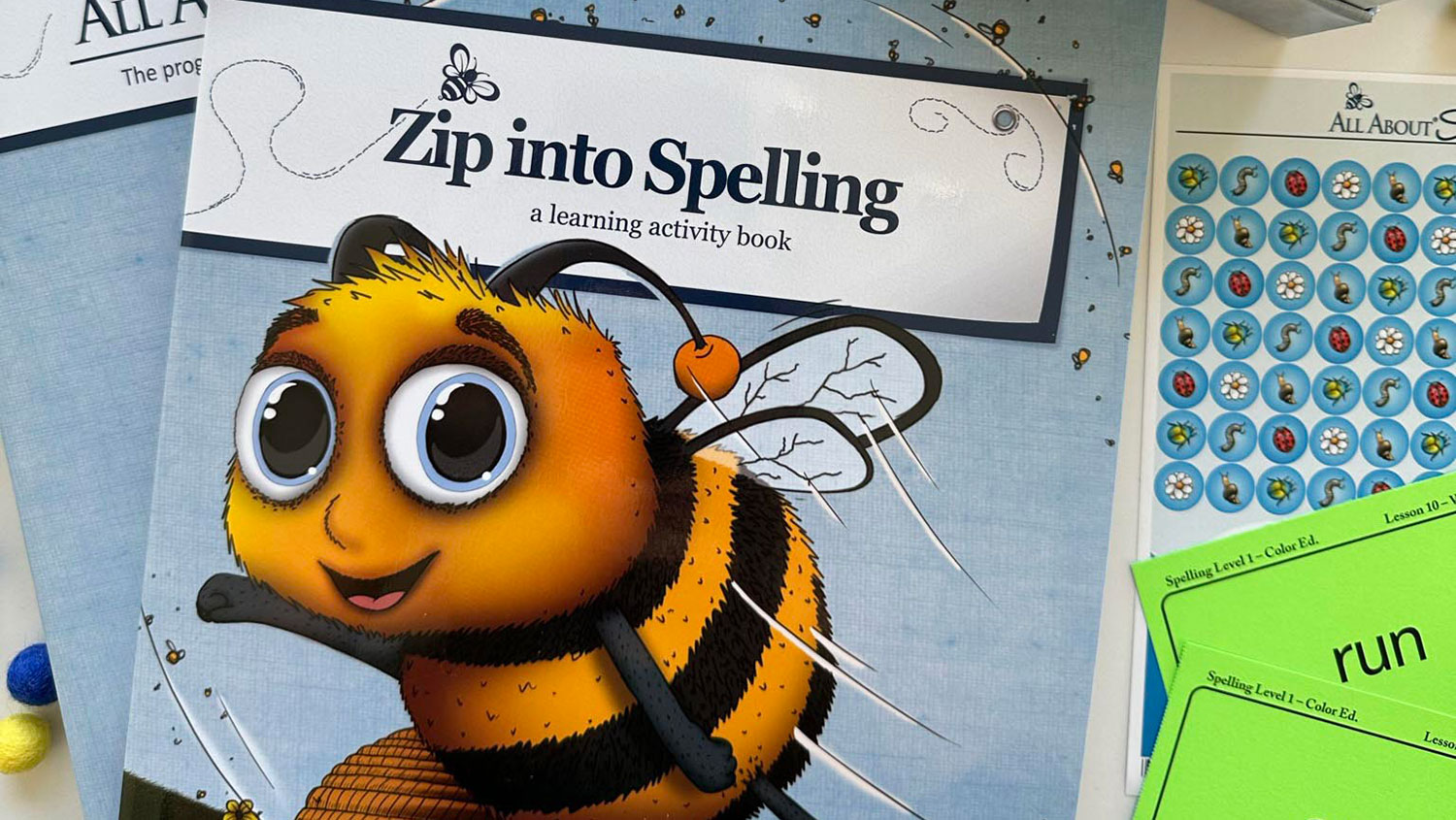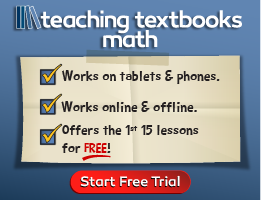All About Spelling (AAS) is a program based on the intensive phonics approach of the Orton-Gillingham methodology. It uses multi-sensory activities that should work well for most learners. AAS is presented in seven levels that can be used from first grade through high school.
While the program shares many features found in other reading programs (such as working with phonogram tiles) and students will learn to read and write words, it is specifically geared toward teaching spelling. You might want to use it alongside All About Reading (also one of my Top Picks) from the same publisher since the lessons will reinforce one another. AAS does not teach handwriting or letter formation. If you are teaching a young child who has not yet learned to write, you might choose a handwriting program to use in conjunction with AAS.
AAS is a multisensory program addressing the three learning modalities in these ways:
Visual: spelling rules are demonstrated with color-coded letter tiles. Flashcards for phonograms, rules, and spelling words also provide visual cues.
Auditory: lessons are taught aloud and flashcards are reviewed orally. When learning new words, students hear themselves say the sounds as they write the corresponding phonograms.
Kinesthetic: children build new words with letter tiles; write phonograms, words, phrases, and sentences from dictation; and handle flashcards.
While AAS is not as multisensory as a program that includes songs and games, it should meet the learning styles of most children. And it uniquely incorporates multi-sensory learning throughout the program, not just for young students.
AAS lessons are presented as “Steps,” breaking instruction into small increments that are easy for students to learn. Each Step focuses on a single concept, such as a particular phonogram or spelling rule, and includes a spelling word list that reinforces that concept. The Steps are customizable and designed to be completed at the student’s pace, so depending on the needs of the student, each one might take a couple of days or weeks to complete.
Because Level 1 teaches foundational spelling rules that will also apply to advanced words in higher levels, most students should begin there regardless of their grade level. A placement test on the publisher’s website will help you determine the correct level for your child.
Each level of AAS requires the teacher’s manual and the student packet, plus the Letter Tiles and the Spelling Review Box that are used for all levels.
The student packet for Level 1 contains the Zip into Spelling activity book, bug stickers, and four sets of color-coded flashcards: Phonogram Cards, Sound Cards (for dictation), Rule Cards (spelling rules), and Word Cards (spelling words). The activity book has a progress chart where the bug stickers can be added, plus a certificate of completion. Flashcards are printed on perforated cardstock, so you’ll need to separate them and store them in your own 3” x 5” index card box or the Spelling Review Box offered by the publisher. With the exception of the Word Cards, the Level 1 flashcards are all used again in Levels 2 through 7. Student packets for subsequent levels include additional flashcards, a progress chart, and a certificate of completion.
Levels 1 through 3 include full-color student activity books, while the rest of the levels do not. (The revised Level 4 with the full-color activity book will be available by June of 2024.) A progress chart and a certificate of achievement are included in the student packets. Activity books include some pages on which students write, but many are cut-and-paste or game-type reinforcement activities that are optional.
In addition to the teacher and student materials for each level, there's a one-time purchase of the set of Letter Tiles and a Spelling Review Box. (The same set of tiles is used with All About Reading.)
The Letter Tiles set includes the tiles, magnets, tokens that are used for segmenting words, syllable tags, and two storage bags. The Letter Tiles are one-inch-square, laminated tiles for all of the letters and phonograms. The adhesive magnets need to be affixed to the back of the tiles so you can use them on a magnetic whiteboard that you supply. Author Marie Rippel recommends using a 2’ x 3’ magnetic, erasable whiteboard that you might also use for storing the tiles.
The Spelling Review Box comes with spelling dividers and foam spacers. As the child moves through the program, flashcards are sorted behind the dividers labeled “Review” and “Mastered.”
Except for the activity books, stickers, progress charts, and completion certificates, all items are non-consumable, so you could use them with another student. However, if you are teaching two or more students simultaneously, each student will need their own student packet so parents can customize the review portion of the lesson.
A free Phonogram Sounds app gives students practice in seeing, hearing, and identifying the phonograms.
One of the most impressive features of this program is the instruction for teachers. Lessons are explained thoroughly and include teaching tips and cautions about common problems at pertinent points in each lesson. Because you learn as you go, the layout eliminates the need for you to first read through a separate manual whenever you need information. If you should need additional help, the publisher offers free phone and email support.
Level 1
Step 1 in the Level 1 book teaches the sounds of the individual letters using phonogram flashcards—including such variations as the two sounds of the letter g. Parents who aren’t familiar with the sounds of the phonograms can learn them from the Phonogram Sounds app.
After introducing the letters and their sounds, Level 1 teaches students how to “segment” words by identifying the individual sounds within them. The color-coded Letter Tiles are introduced, first for learning how to alphabetize the letters, then for constructing words.
A form of dictation begins in Step 4 when students are asked to listen to the sound of a phonogram and then point to the letter tile that makes the sound. In later lessons, students write the phonogram on lined paper, then listen to and spell words with letter tiles.
By the end of Step 11, students are writing spelling words and several phrases such as “big dog.” Step 12 introduces consonant digraphs th, sh, and ch, with subsequent Steps continuing to add more challenging phonograms and concepts like compound words and syllables.
Level 2
Level 2 quickly reviews Level 1 content, then teaches 43 more phonograms. The program emphasizes the rules and generalizations for spelling, and syllabication plays an increasingly important role. For example, students learn rules such as those on Rule Card 5, which teaches that the vowel in a closed syllable is usually short and the vowel in an open syllable is usually long. The student packet includes “syllable tags” that students use in conjunction with the letter tiles to identify types of syllables.
“Rule breaker” words like of and was are taught at this level, but there are few sight words. The amount of dictation expands to several phrases and sentences per day. The vocabulary introduced in Level 2 ranges from simple words like cake, late, and car to more challenging words like compost, humid, and prevent.
Level 3
Level 3 adds 10 new phonograms, more suffixes, and further work with syllables. Silent-e words receive more attention as students complete the Silent E Book that is created from pages in the activity book. More challenging phonograms like the sounds of oo and ways to spell the /k/ sound are taught along with contractions and homophones. Spelling words taught in Level 3 are generally longer and more complex, with words like childhood, graceful, we’ll, and giggle being representative.
Level 4
Level 4 continues to advance with more challenging phonograms like eigh and the four sounds of the letter y. Syllable types, syllable division rules, and spelling strategies are also taught at this level. An example of a dictation sentence from page 20 of this level is, “None of the students took the test today.” Examples of some of the more difficult words taught are chimney, eighteen, and unhinged.
Level 5
Level 5 adds phonograms such as si and ough while continuing work on other phonograms, such as those that make the /er/ sound. Students also work on plurals, including irregular plurals. One sample from the dictation on page 62 is, “What flavor is the cake you’re baking for us tonight?” Some more-challenging spelling words from Level 5 are encouraged, equipment, gnome, perfection, and volcanoes.
Level 6
Level 6 teaches phonograms like mb, gu, and augh; exceptions to the i-before-e rule; suffixes such as able and ible; some “rule breakers”; and other advanced facets of spelling. Examples of the more-challenging words are agreeably, collectible, encouragement, sheik, and sheriff. Many of the words are familiar words with suffixes that are often misspelled.
Level 7
Level 7 provides coverage through high school. The program covers advanced sounds, Latin roots, Greek word elements, French endings and silent letters, and some Spanish and Italian words. Examples of some of the words are extinguish, convenient, solemn, bankruptcy, transformation, and psychology. Students work on word analysis and learn to identify prefixes, suffixes, and roots. Letter tiles are frequently used for word analysis and word building.
Supplement with Something Fishy
 Something Fishy is a source for even more activities that can be used with any level of either All About Spelling or All About Reading. For instance, nine starfish cards (each with a different starfish) can be cut from a page in the book. You dictate your choice of nine words for students to write on the back of each starfish card, then students arrange the images in the order of their favorites. You can see how this type of activity easily adapts to any level. I think the activity books for the first three levels already have plenty of this type of reinforcement, but it might be useful for levels beyond that or alongside the reading program.
Something Fishy is a source for even more activities that can be used with any level of either All About Spelling or All About Reading. For instance, nine starfish cards (each with a different starfish) can be cut from a page in the book. You dictate your choice of nine words for students to write on the back of each starfish card, then students arrange the images in the order of their favorites. You can see how this type of activity easily adapts to any level. I think the activity books for the first three levels already have plenty of this type of reinforcement, but it might be useful for levels beyond that or alongside the reading program.
Summary
Although All About Spelling is a rules-oriented program, incremental teaching, and a multisensory approach help students to be successful.










